Continuing the ongoing series of interviews with creative artists working on various aspects of movie and TV productions, today I’m honored to welcome the set decorator Kris Boxell. You’ve seen her work in the two sequels of “The Matrix” trilogy, “Fruitvale Station” and, most recently, “Blue Jasmine.” In this interview she talks about her first production – “The Right Stuff”, drafting and creating the right look for the specific production, working with on-set green screen environments, the day-to-day activities on the set in her role as the set decorator, her collaboration with production designer Santo Loquasto on Woody Allen’s “Blue Jasmine”, and a deep dive into the impact – or lack thereof – of digital revolution on her craft.
Kirill: Please tell us about yourself and your path in the movie business.
Kris: I came out of the television generation – from mid-fifties into the sixties. And at some point, probably in early sixties, they had a movie on every afternoon. I’d come from home to school, and there’d be a movie on. I was watching them and it was rather exciting.
Later I would go to movies, but I wouldn’t stop everything for it. Living in Los Angeles in the seventies, I couldn’t afford first-run films, so I would see revival presentations, usually two at a time, as well as foreign. My local theater would play two movies every night, and it was mostly film noir for months. When I was 18 to 21, it was this amazing exposure to such classic film noir movies, and it’s part of my soul now.
I was in college studying sociology, and then went to graduate school at UCLA, but not majoring in film. There wasn’t a very big film department; I would’ve done media studies, but it didn’t exist. I was a sociologist and a demographer doing research. Then I met my husband at San Diego Comic-Con which you probably have heard of [laughs].
Kirill: Back then it was a rather small convention.
Kris: It was tiny. You had all these artists, and I had really good friends in Westwood who had a comic-book company, and I spend all my time reading vintage comics. Then Ron Turner, a publisher from Last Gasp Publishing who did the early underground comics, introduced me to Tim Boxell, and then we were married. I moved to San Francisco and dropped out of the PhD program at UCLA, and a year later, not even intentionally, found a back door into the film industry.

My husband was doing storyboards on “The Right Stuff”. Philip Kaufman the director likes to communicate via storyboards. They started with the effects sequences, and my very first job in the movie business was taping up storyboards. Then I got hired as an art assistant in visual effects. That was waaaay before computer graphics. We threw model airplanes out of the windows [laughs]. We lit things on fire in parking lots.
I look at behind-the-scenes and voiceovers on older movies with Ray Harryhausen and other animatronics artists talking about how they did it. They were asked to do something, and then they started figuring out how to do it and seeing what works.
We did a lot of motion control on “The Right Stuff”. We had a gigantic motion control machine, and it would repeat the action of the camera. It was really thrilling to be able to do those things, and a lot of processing was in-camera, with multiple passes and a lot of mattes, background plates and glass paintings. I had a real appreciation for matte painters, and they still have an organization, and there’s a lot of history there.
Continue reading »
Continuing the ongoing series of interviews with creative artists working on various aspects of movie and TV productions, today I’m honored to welcome the cinematographer Benoît Debie. In this interview Benoît talks about the evolving craft of cinematography as the technology is shifting the productions towards the purely digital end of the spectrum, what happens on a movie during pre-production, shooting and post-production phases, his work on the recently released “Spring Breakers” and how he approached the explosive neon colors that permeate the story, and the experience of shooting in 3D for his upcoming “Every Thing Will Be Fine”.
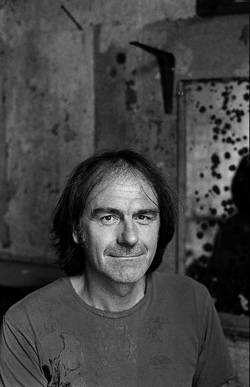
Benoît Debie.
Photography by Kris Dewitte.
Kirill: Please tell us about yourself and your path so far.
Benoît: I started when I was quite young, around 23 years old. I went to a film school in Belgium, and after graduating I did two movies as AC (assistant camera), but it wasn’t really my cup of tea. I wanted to be a DP (director of photography) for feature film, but it’s quite difficult to get there when you’re just starting. I went to the TV world for around eight years, learning a lot about TV shows, and then little by little I went back to the film industry. I did a few short movies and commercials, and my first feature was “Irreversible” from Gaspar Noé. From that moment I’ve been doing only feature films.
Kirill: How do you get approached to work on a production? Is it through the connections on your previous films, or a more formal auditioning process?
Benoît: It depends. Some directors would ask me to join them for my style or my approach. In that case they would come to me for something very specific. And sometimes I have auditions, but they are not as frequent these days. More often than not I would get called to discuss a project, or I’d get a script and then we’d discuss how to start approaching it.
Kirill: What happens during the pre-production?
Benoît: It depends on the movie and the director. I did two movies with Gaspar Noé, and with him I only join the production the day before we start shooting. That’s the way he likes it – for me to be a little bit unprepared. With other directors it may take 6-8 weeks to prep the movie, to see the locations, to do the storyboards and the shooting lists. It also depends on the complexity of the movie.
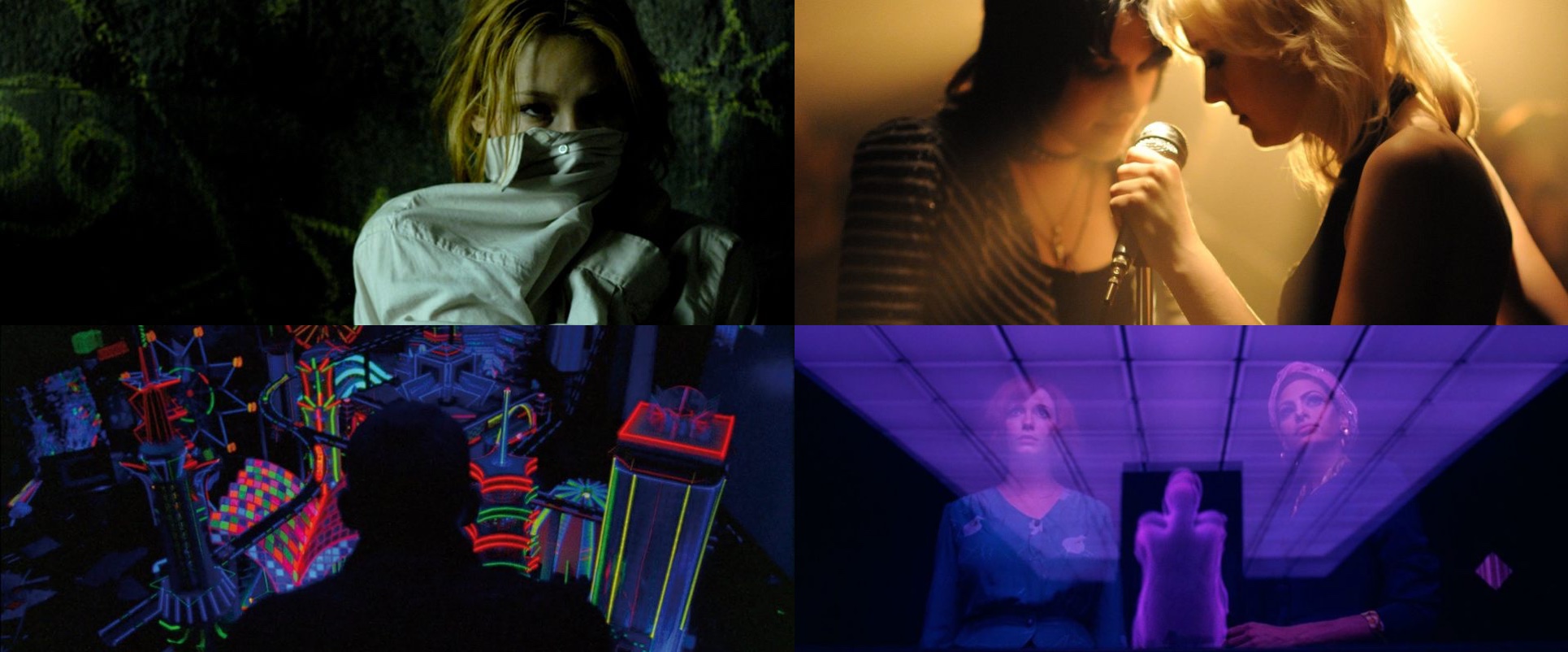
Top left – Passage, top right – The Runaways, bottom left – Enter The Void, bottom right – Lost River. Courtesy of Benoît Debie.
Kirill: As the shooting starts, do you also operate the camera? Is there a distinction between you as the director of photography and another person as the camera operator?
Benoît: You can certainly be a DP and not operate the camera. I always do both because I like to operate. It’s really important to me, especially when we shoot on film. I can see the exact frame through the eyepiece – the reflection, the darkness, the contrast. It’s important for me to see that, and I also like to operate the camera. It’s part of the look of the movie. I was the camera operator on all my movies, except for some union restrictions on movies that we shoot in the United States and some cases where we need a second camera.
Kirill: What are your thoughts on the transition from shooting film to shooting digital? It used to be that only you would see the image through the camera, and it would take a few hours or maybe even a couple of days to process the dailies. And now if you connect a monitor to your digital camera, everybody who wants to see the take can see it immediately. Do you feel that you’re losing some of the magic of capturing the scene on film?
Benoît: This is a big change and a big difference between film and digital. As much as I can I keep on shooting film. It’s not only the quality that is much better. It’s also the difference between the way you shoot in film and the way you shoot in digital. For me, when we shoot in film, everybody’s focused on the action, on what have we to do – the actors, the director, the DP and everybody else. When we shoot in digital, it’s completely different. Everybody’s shooting for what seems like forever, with no cuts.
I think we’re losing things not only in terms of image, but also in terms of intensity on the set. And it’s a shame, because that’s a completely different approach to filming.
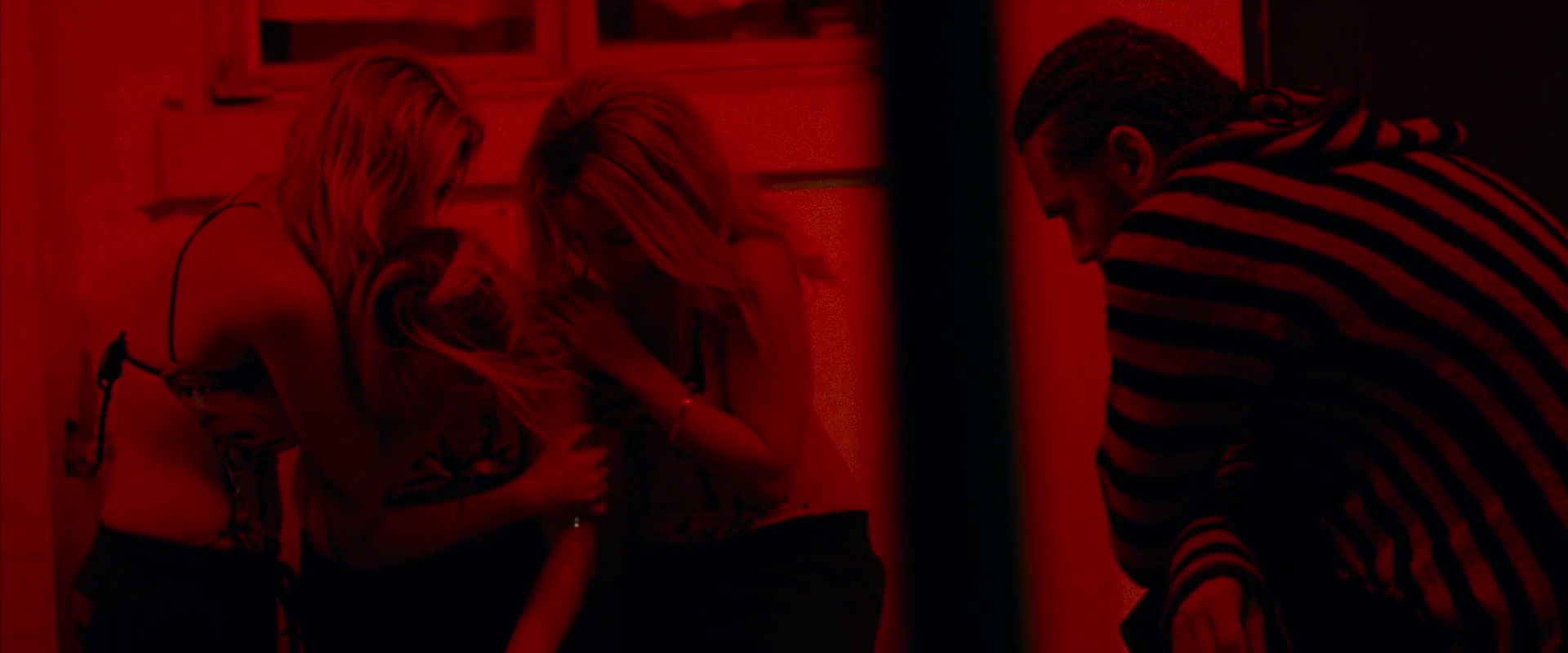
Continue reading »
“Penny Dreadful” is one of the darker dramas that have graced our TV screens this year. Bringing together fictional characters from the Victorian and Edwardian literature, it weaves their origin stories set back in the haunting atmosphere of late 1800’s London. Owen McPolin is the cinematographer who shot four of the eight episodes in the first season of the show. In this interview he talks about the overall structure of shooting episodic television, creating a unified visual experience throughout the show’s arc while still allowing for individual artistic freedom of expression, the ambitious scope of quality of modern episodic TV productions, advances in digital equipment and how he sees the craft of cinematography evolving in the world of computer-generated media such as video games and animated movies and the increasing collaboration of cinematographers and visual effects supervisors. The second half of the interview delves deep into the details of “Penny Dreadful”, talking about researching the era and picking correct lighting, choosing techniques to convey suspense and fear and various aspects of this globe-spanning collaboration that encompasses facilities in Canada, US and Ireland.
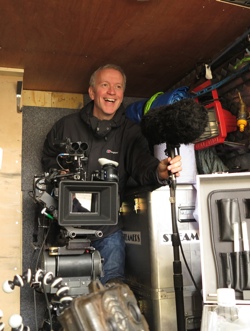 Kirill: Please tell us about yourself and how you got into the business.
Kirill: Please tell us about yourself and how you got into the business.
Owen: My name is Owen McPolin. I’m from the West of Ireland, and I’ve been working professionally in the industry since 1996. I was educated in Ireland, but I did most of my third-level education in film in the UK after which I returned to Ireland where I’ve been working mostly in TV Drama, shorts and smaller budget pictures.
Kirill: How does it usually work for you on episodic TV since you don’t get to shoot all the episodes for the whole season?
Owen: The structure of the industry here tends to dictate that. You would have a lot of dramas where certain DOPs [directors of photography] would shoot certain blocks. Sometimes you have leapfrogging DOPs who shoot the first pair of episodes, then the third one and then the final pair. Or you may have a situation where you do the second and the fourth blocks. Or there have been occasions where you do only two episodes of a 10-episode season. It depends on your availability and on what you’ve committed to before.
People tend to like to pair a DOP and a director in the UK, particularly on block structured series. So if the director leapfrogs, so does the director of photography. That way they can prep alongside, and then shoot together, and then go together into another prep or editing, as the other pair come into their block. That way there’s no discontinuity in production.
Kirill: How does this approach work on productions that tell a longer story throughout the whole season, or even across multiple seasons? You can’t really watch each episode as its own thing on such shows.
Owen: That comes down to the tone of the piece as it’s set at the beginning of the production. There would be a basis by which you approach the piece. If there’s a certain location set up, or a certain story arc or a certain character, you would tend to follow the grammar that you would’ve applied at the beginning for that location, the character or any given scene.
It’s episodic in nature, and you normally return to certain hero locations, hero situations, hero characters. Even though you have individual creativity as the DOP which would change and inform your approach, the overall feel of the project is already set up and you would tend to follow that, to use that as the jumping point for your own approach. There’s always going to be nuances and changes to the approach, but nothing ever too radical that would get you out of the world.
Kirill: And besides the first pair of director / DOP, there’s a lot of decisions done by the show creators.
Owen: Indeed. The creators and the producers, along with the production designer and the costume designer would start to create the idea of the world that you’re trying to capture. All the base elements are there – the sets, the colours, the tones, the costumes, the approach about how to move the camera or not. Those decisions are made earlier on.
When that structure exists, you enter that world and you capture it by your interpretation. The variables are set to a certain degree, but how you interpret a certain screenplay photographically with the same set of ingredients is up to you.
Producers and creators generally engender encouragement to the DOP to find a different way. They might say that they like what came before, but they want you to prove it, to change it a bit, to say something else, to offer them something in that scenario.
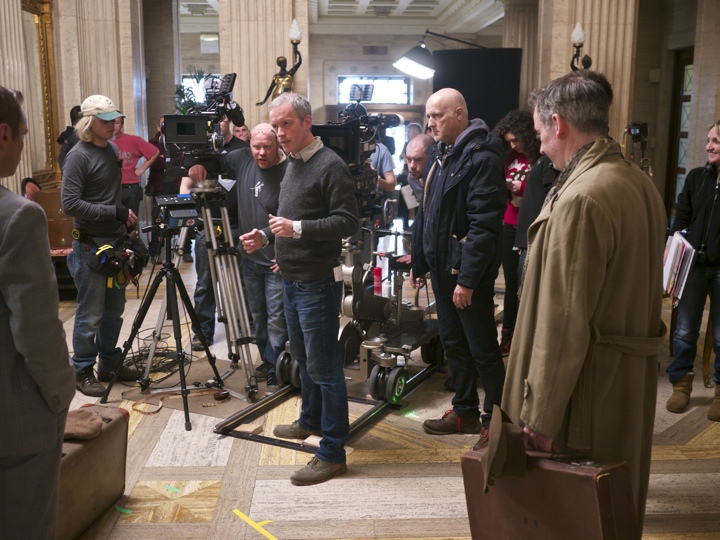
Continue reading »
When I first spoke with the cinematographer Jonathan Freeman ASC in late 2011, it was primarily about his work on feature films. Since then he has worked on a number of HBO television productions, including “Game of Thrones” and “Boardwalk Empire”. In this interview Jonathan talks about the disappearing world of mid-budget adult feature drama and the migration of creative talent into the television world, defining and evolving the visual look of a series in collaboration with multiple director / cinematographer crews, an almost-continuous seasonal cycle of high-quality adult drama series, his close collaboration as a director of photography with VFX department on the effects-heavy “Game of Thrones” and working on tighter-scripted story arcs that span entire seasons.
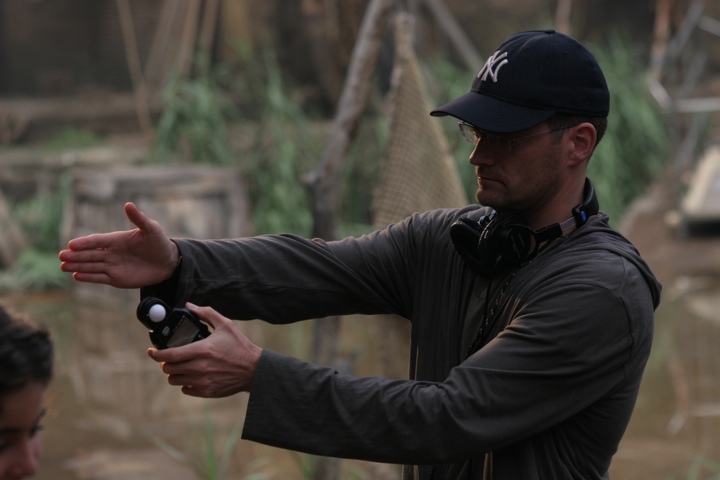
Kirill: As a viewer I’m seeing a lot of quality adult drama productions writing, as well as high-profile cast & crew, moving from the feature world into the TV world in the last few years – including “Game of Thrones” and “Boardwalk Empire” that you’ve been working on. Is that what you are seeing as well from within the industry?
Jonathan: Generally speaking I prefer the shorter format of movies. Telling a concise story, within a couple of hours, more or less, is something that I always aspire to. However I’m always drawn firstly to the content of the script. The difference of quality between features and television scripts that I’ve been exposed to lately, is quite surprising. There’s been such a great improvement in television writing to the point where one could argue that the best writing is currently in TV. You’re starting to see now how the success and popularity of TV shows overshadow some of the major film releases. If the old water cooler is any gage, people seem to talk about popular TV shows on Monday mornings more often than the latest blockbusters.
You’re also seeing a migration of highly sought-after filmmakers desiring to make a leap into television. Part of that is probably financial, but I think there are two aspects on the creative side. The first is the opportunity to tell a longer story, which is something unique. And the other is that the material presented to them is quite exceptional. As for myself, I continue to choose my projects based on the quality of material rather than the medium itself.
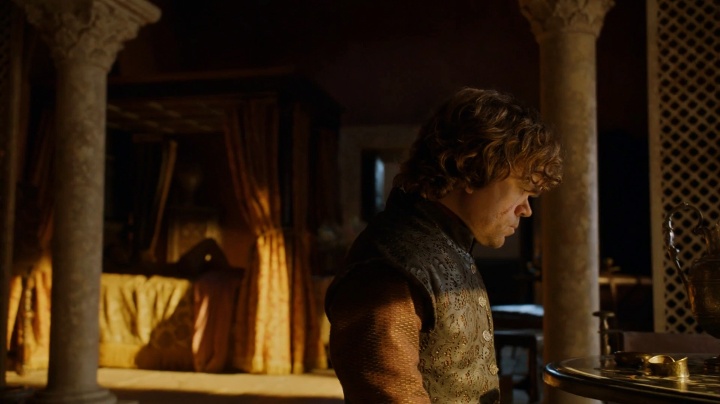
Kirill: And there’s not much mid-budget drama being done in feature world.
Jonathan: That’s very true. There seems to be a void between ultra low budget films and tentpoles. The middle-sized budgets – from $15M to $40M – are rarely being made currently. You’ll occasionally come across a couple here and there that were built up through some unique financing. But it seems like mid-range films, for the moment at least, are not profitable investments for the studios.
Hopefully these are cycles that may come back. There was a period a few years back where films recognized by the Academy awards were independent ones in that $15M-$40 range, gaining interest from the Oscars as well as at the box office. That seemed to go away when tentpoles and the ultra-low budget horror movies became very financially successful.
Continue reading »
![]()